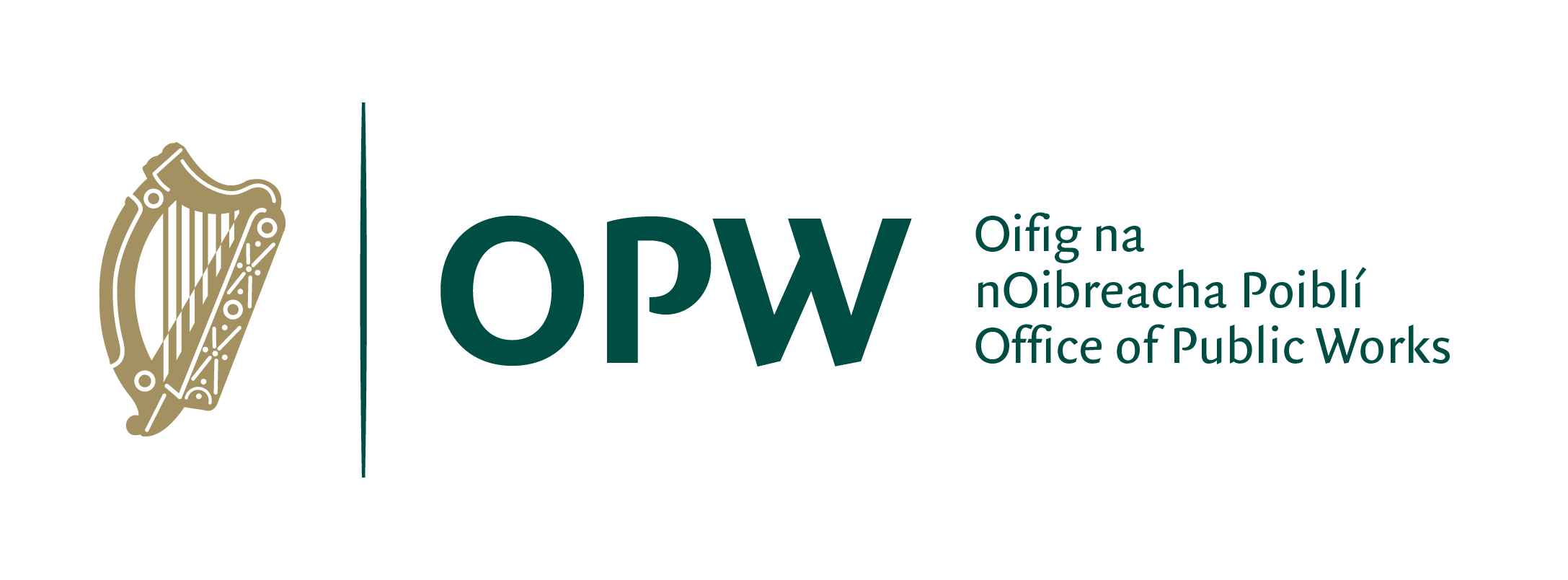By Nuala Canny, Librarian, OPW.
When the Guinness family sold Farmleigh to the Irish government in 1999, many of the contents, including the very fine library, were left on loan to Office of Public Works. Now known as the Benjamin Iveagh Library, this splendid collection, which contains more than 5000 items spanning 800 years of Irish life and culture, was donated in 2008 to Marsh’s Library by Benjamin’s children. It continues to be curated and cared for by the Office of Public Works at Farmleigh in its beautiful two-tiered room.
The Library which is panelled in Austrian Oak with exquisitely rendered carvings in the neo – Jacobean style was part of the renovation undertaken by Edward Cecil in the 1880s. An interesting feature of the room are the rollers underneath the mezzanine that could be pulled down to pin prints, maps or plans on. It was Edward Cecil ‘gentleman’s library’ with books on brewing, classics and religion that his great grandson Benjamin Guinness, third Earl of Iveagh inherited as a young man in the mid-1960s.
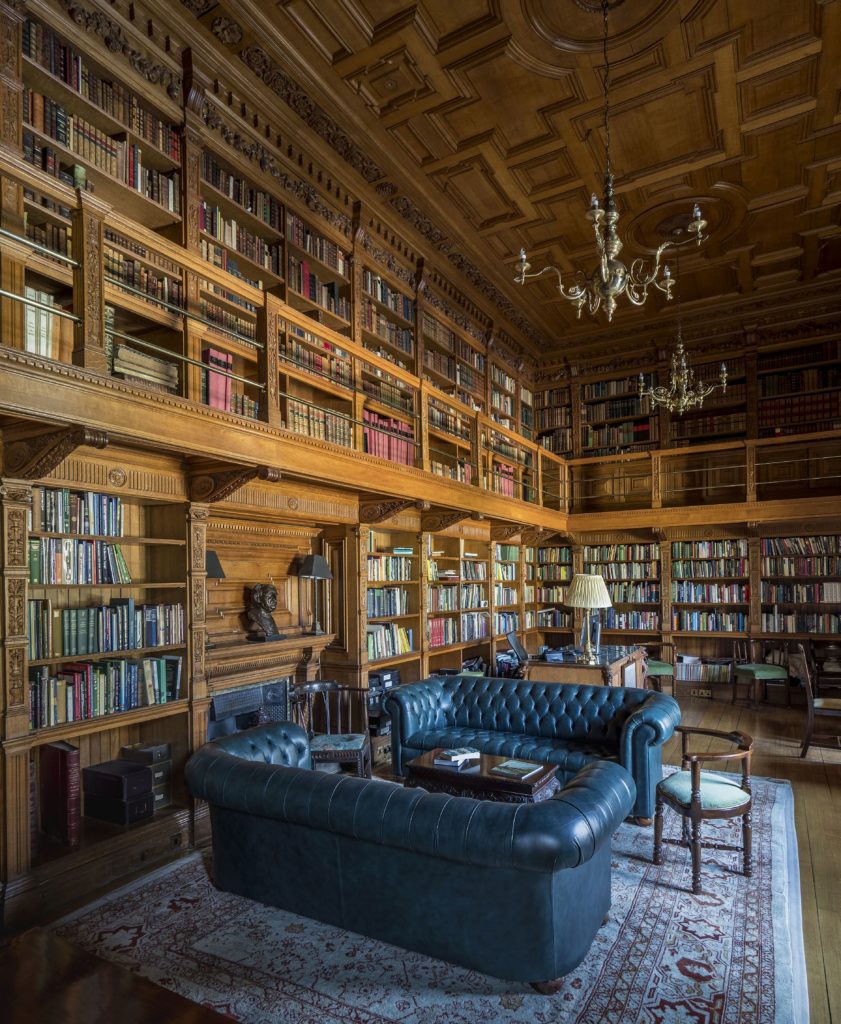
Inspired and assisted by his wife Miranda, Benjamin Guinness became a passionate and astute bibliophile who throughout the twenty seven years of his collecting life amassed an extraordinary library. Miranda came from a family of book collectors and the first book which was added to the collection was a 1788 Dublin binding of Dictionary of the English Language by William Scott a Christmas present from Miranda’s grandmother Alicia Pearson to Benjamin.
Benjamin was very focused on drawing together a picture of Ireland and the Irish people in books and manuscripts. The library reflects this as most of the important Irish thinkers like Boyle, Berkely, Goldsmith and Swift are represented here with first or special editions. As are all the great Irish authors and poets including Edgeworth, Joyce, Yeats, Beckett, O’Casey, Kinsella and Heaney.
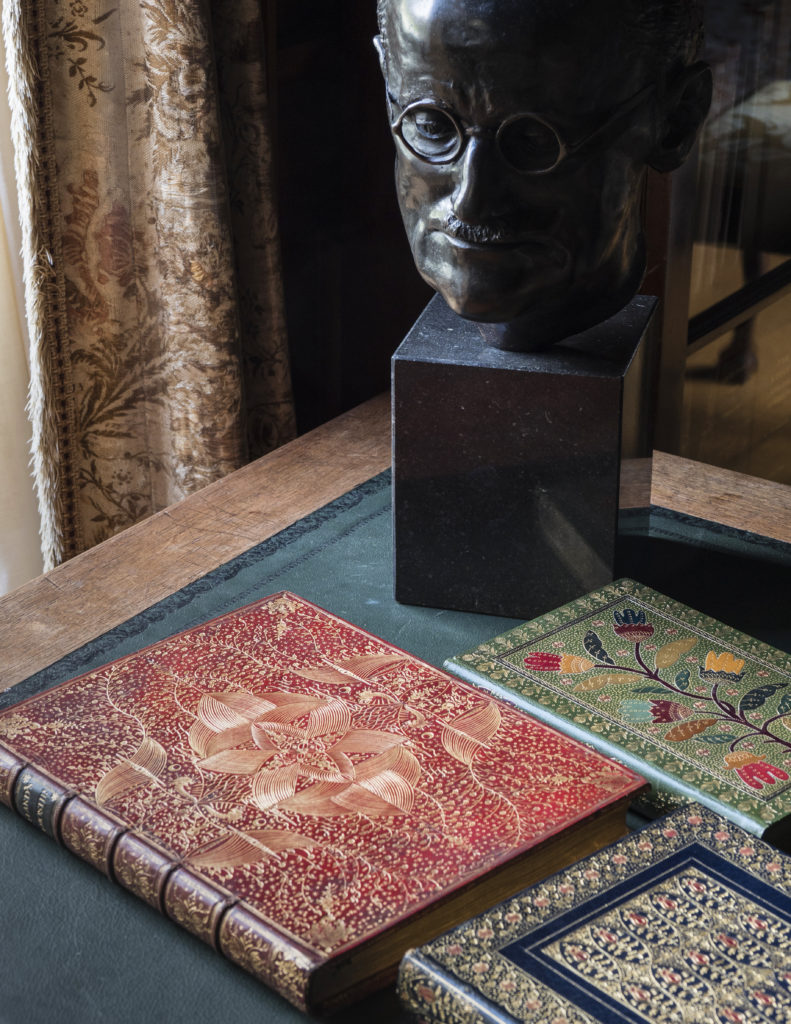
While the printed works which include many rare imprints and early periodicals represent the majority of the holdings, there is some exceptional manuscript material, including a copy of the Topography of Ireland by Gerald of Wales c.1280, and the trilingual language primer used by Queen Elizabeth I c. 1564 to learn Irish, together with letters from Sean O’Casey, W.B. Yeats, Lennox Robinson, Daniel O’Connell and Roger Casement.
The items that adorn these shelves represent important moments in the areas of Irish Politics, Literature, and Science: we have a triumphant letter from Daniel O’Connell to his wife in 1829 telling her of the passing of the Roman Catholic Relief Act, which led to Catholic Emancipation, a first edition of James Joyce’s seminal work Ulysses published in 1922 and the first appearance in print in 1662 of Boyle’s Law.
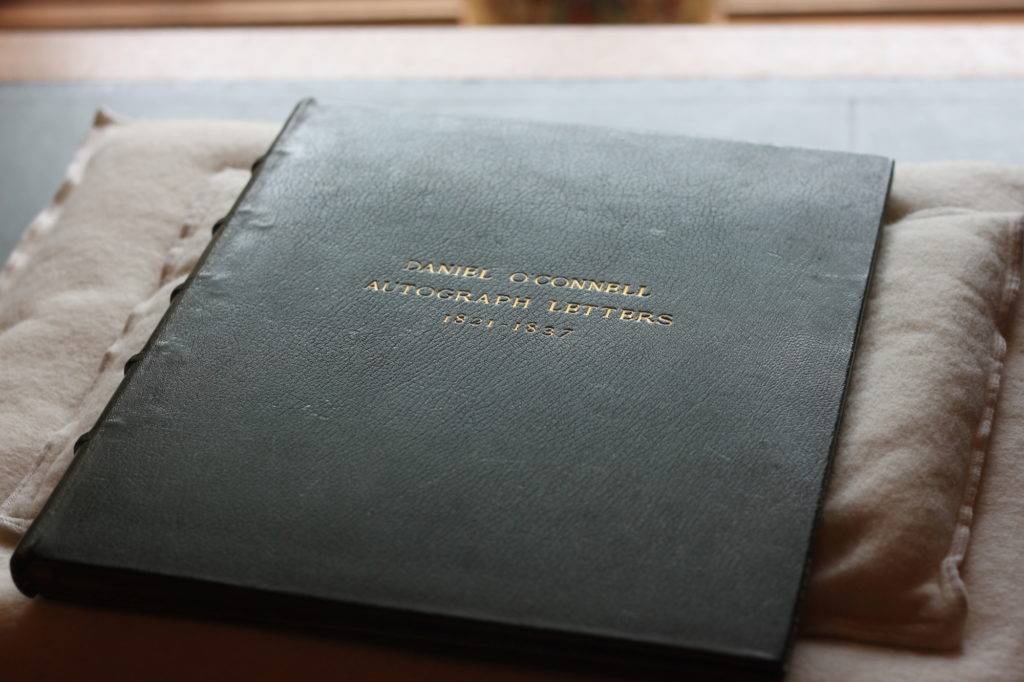
The decorative bindings which represent a very significant part of this library give an amazing insight to the skills of the Irish 17th /18th /19th Century book binders. The glittering volumes with exotic decorative motifs created by Irish craftsmen, such as gilt cornucopiae and intricate roses worked onto the finest, coloured leathers. One of the treasures of the collection, is Parliamentary Binder B’s ‘featherwork’ binding covering Thomas Leland’s translation of the Orations of Demosthenes (W Sleater, Dublin, 1756). The exuberance and intricacy of this red leather, gold tooled decorative binding is awe inspiring. 20th Century fine binders are also represented including Edward O’Sullivan, french designer Paul Bonet and more recently Desmond Smith with his wonderful cover on the special edition of The Táin, translated by the poet Thomas Kinsella and illustrated by the artist Louis Le Brocquy.
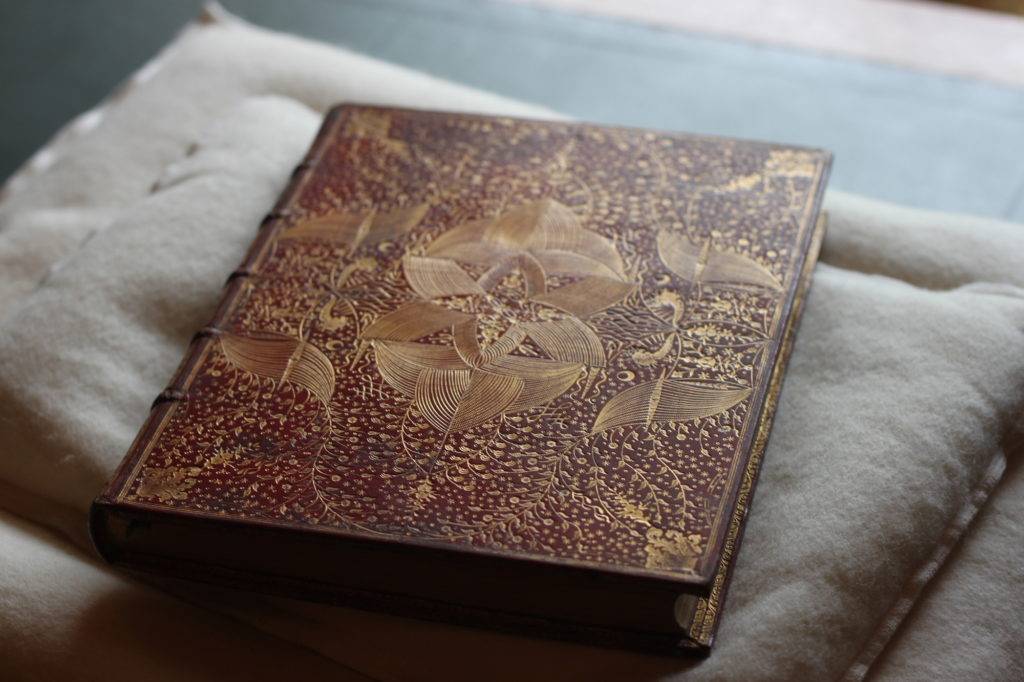
The Benjamin Iveagh Library has played an important role in official hospitality with visits by the Empress of Japan, Michelle Obama and Queen Elizabeth visit the Library in recent years. The visit by the Queen was particularly significant as she was presented with a facsimile of a sixteenth-century Irish language primer. The Irish Language Primer was prepared for Queen Elizabeth I by Christopher Nugent, Baron Delvin (c. 1544-1602). The Primer is undated however; it is believed that it was presented to Elizabeth I on the occasion of her visit to the University of Cambridge in 1564..
Small exhibitions of items from the Benjamin Iveagh Library are regularly displayed in the house usually around a theme ie. rebellion in Sean O’Casey’s works or the role of the Phoenix Park in James Joyce’s works. Items are also occasionally on display in Marsh’s Library for special exhibitions.
Facilitating access by academics and researchers is central to our work. The munificence of the children of Benjamin and Miranda Guinness in donating the collection to Marsh’s has ensured that this remarkable collection will remain at Farmleigh. With the library catalogue now available via the Marsh’s Library website, accessibility to the scholarly community and to the public at large has been further enhanced.

For information on researching in the library click here.

